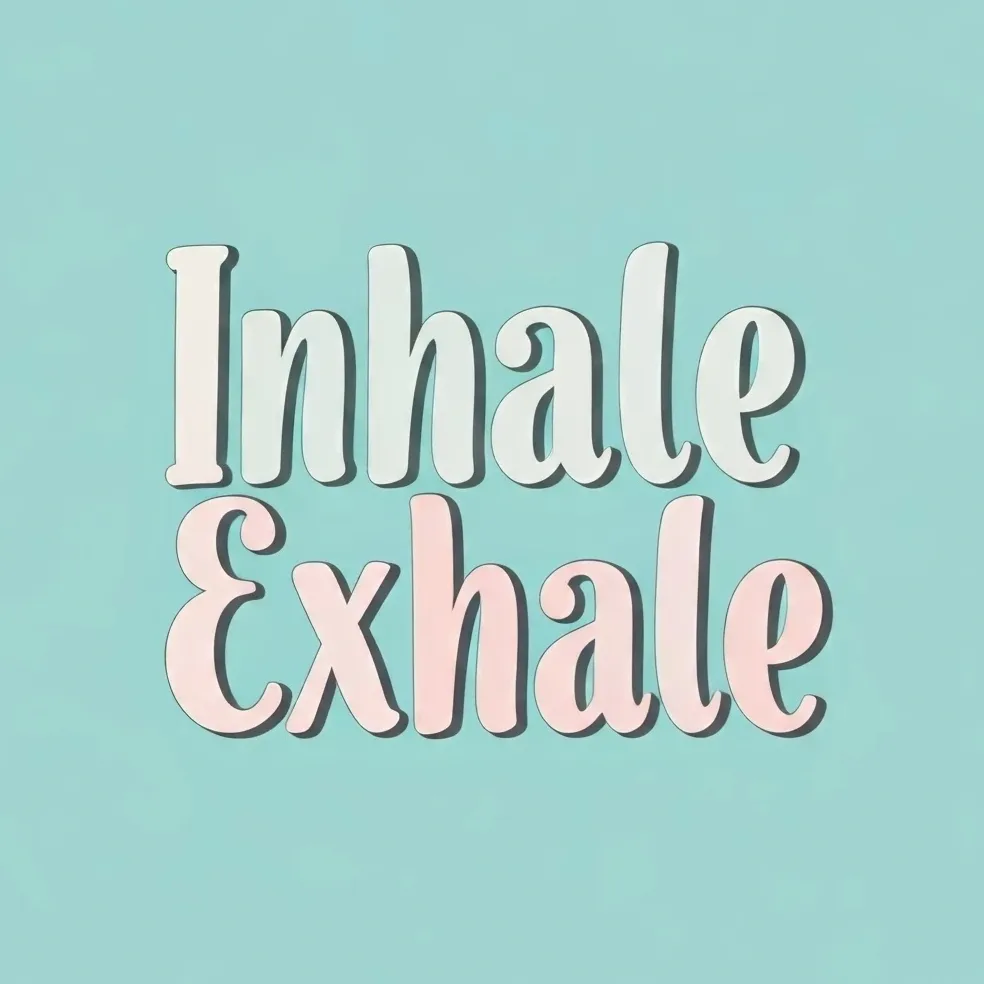Anxiety can be a relentless companion, impacting our thoughts, physical well-being, and emotional balance. While therapy and medication are essential for managing severe cases, simple breathwork techniques can offer powerful, accessible relief for anxiety in everyday situations. Backed by neuroscience, breathwork can create profound shifts in our nervous system, helping us regulate emotions, clear our …
Anxiety can be a relentless companion, impacting our thoughts, physical well-being, and emotional balance. While therapy and medication are essential for managing severe cases, simple breathwork techniques can offer powerful, accessible relief for anxiety in everyday situations. Backed by neuroscience, breathwork can create profound shifts in our nervous system, helping us regulate emotions, clear our mind, and restore a sense of calm.
Understanding Breathwork: The Science of Calm
When anxiety hits, our body triggers the “fight-or-flight” response, releasing stress hormones like cortisol and adrenaline. Our breathing becomes shallow and rapid, fueling the cycle of panic. By consciously controlling our breath, we can directly communicate with the parasympathetic nervous system—the “rest and digest” system—to calm the body. Research shows that slow, controlled breathing can reduce cortisol levels, lower heart rate, and increase heart rate variability (HRV), which is associated with resilience and emotional regulation.
How does breathwork help?
Breathwork positively affects the vagus nerve, the primary component of the parasympathetic nervous system. Activating this nerve helps decrease heart rate and blood pressure and promotes a sense of relaxation. Studies reveal that even a few minutes of intentional breathing can shift brainwave activity from high-alert beta waves to calming alpha waves, reducing symptoms of anxiety and improving overall mood.
Let’s explore five effective breathing techniques and the science behind why they work to help you manage anxiety, whether in moments of heightened stress or as part of a daily practice.
1. Box Breathing
How to do it:
– Inhale through your nose for a count of 4 (if you are beginner, may try 2 or 3 counts to begin with and progress eventually)
– Hold the breath for a count of 4.
– Exhale slowly through your mouth for a count of 4.
– Hold again for 4, and repeat for several cycles.
When to use it:
Box breathing is perfect for moments when you’re feeling overwhelmed or panicky. It’s effective for grounding yourself in high-stress environments—before a meeting, after a tough conversation, or anytime you need a quick reset. The structured pattern helps you stay focused and brings a rhythm to your breath, easing anxiety.
Why it works:
Box breathing increases oxygen flow to the brain and activates the vagus nerve, reducing the “fight-or-flight” response. Research shows that this form of structured breathing lowers blood pressure and decreases cortisol levels, helping to stabilize mood and calm the mind.
2. Breathing 4-7-8
How to do it:
– Inhale deeply through the nose for 4 seconds.
– Hold the breath for 7 seconds.
– Exhale fully through the mouth for 8 seconds.
– Repeat for 4 cycles, working up to more over time.
When to use it:
4-7-8 breathing is ideal for winding down, especially in the evening or when anxiety interferes with sleep. It has a naturally relaxing effect, making it an excellent bedtime practice for those with racing thoughts or insomnia.
Why it works:
This technique slows down breathing and extends the exhale, which reduces heart rate and promotes a calm state. It has been found to reduce symptoms of anxiety and stress by increasing the carbon dioxide threshold in the blood, which has a calming effect on the brain and body.
3. Diaphragmatic Breathing (Belly Breathing)
How to do it:
– Sit or lie down, placing one hand on your chest and the other on your belly.
– Take a deep breath through the nose, allowing your belly to rise while your chest remains still.
– Exhale slowly through your mouth, letting the belly fall.
– Repeat for 5-10 minutes, focusing on the rise and fall of the belly.
When to use it:
This technique is excellent for daily practice to build resilience against anxiety. Use it in the morning to start the day calmly or during breaks to prevent stress from building up. It’s also effective when preparing for situations that cause nervousness, like public speaking.
Why it works:
Diaphragmatic breathing improves oxygen exchange and strengthens the diaphragm, promoting relaxation. Studies show that this type of breathing can help reduce symptoms of PTSD and generalized anxiety disorder by lowering blood pressure, reducing heart rate, and increasing feelings of emotional stability.
4. Resonant Breathing (Coherent Breathing)
How to do it:
– Inhale for a count of 5.
– Exhale for a count of 5.
– Aim to complete 5-6 breaths per minute for around 5 minutes.
When to use it:
Resonant breathing is perfect for times when you feel the need to reset—during a stressful workday, after a conflict, or when you’re feeling restless. Practicing this regularly can help you build resilience to stress over time.
Why it works:
This practice encourages heart rate variability (HRV), which enhances the body’s ability to handle stress. Research has shown that resonant breathing increases vagal tone, strengthening the parasympathetic nervous system and reducing the likelihood of experiencing intense anxiety.
5. Alternate Nostril Breathing (Nadi Shodhana/Anulom Vilom)
How to do it:
– Sit comfortably with a straight spine.
– Close your right nostril with your thumb and inhale through your left nostril.
– Close your left nostril with your ring finger, open the right nostril, and exhale.
– Inhale through the right nostril, then close it and exhale through the left.
– Continue this cycle for 5-10 minutes.
When to use it:
This technique is ideal for balancing emotions when you’re feeling mentally or emotionally scattered. It’s great for situations where you need to regain focus, like studying or calming down before an important presentation.
Why it works:
Alternate nostril breathing balances the two hemispheres of the brain and promotes a sense of equanimity. Studies indicate that it can improve attention span and reduce anxiety by harmonizing brain activity and promoting feelings of relaxation.
Final Thoughts: Making Breathwork Part of Your Routine
Integrating breathwork into your daily routine builds resilience to anxiety and equips you with on-the-spot tools to manage high-stress situations. Start small, perhaps with a 5-minute practice each morning or evening. When anxiety arises, choose a technique that suits your situation and take a few minutes to bring awareness to your breath.
Breathwork is a powerful, scientifically-supported practice for calming the mind and body. By regulating our breathing, we can take control of our inner state and navigate life’s challenges with a little more peace and calm. If anxiety feels overwhelming, remember that breathwork can be a helpful tool alongside other therapies and self-care practices.
If you are facing anxiety related issue(s), please connect with us as therapy is found to be effective in building coping skills to work through it. We are here for you.






